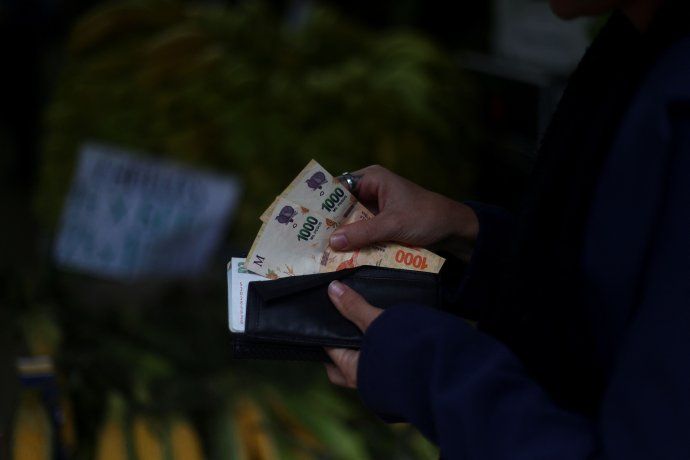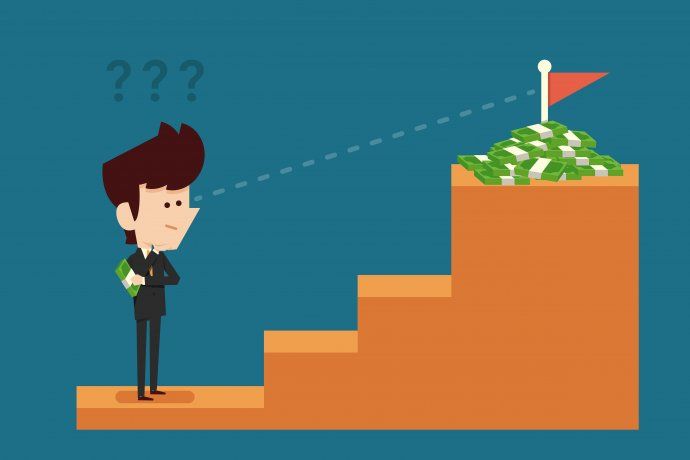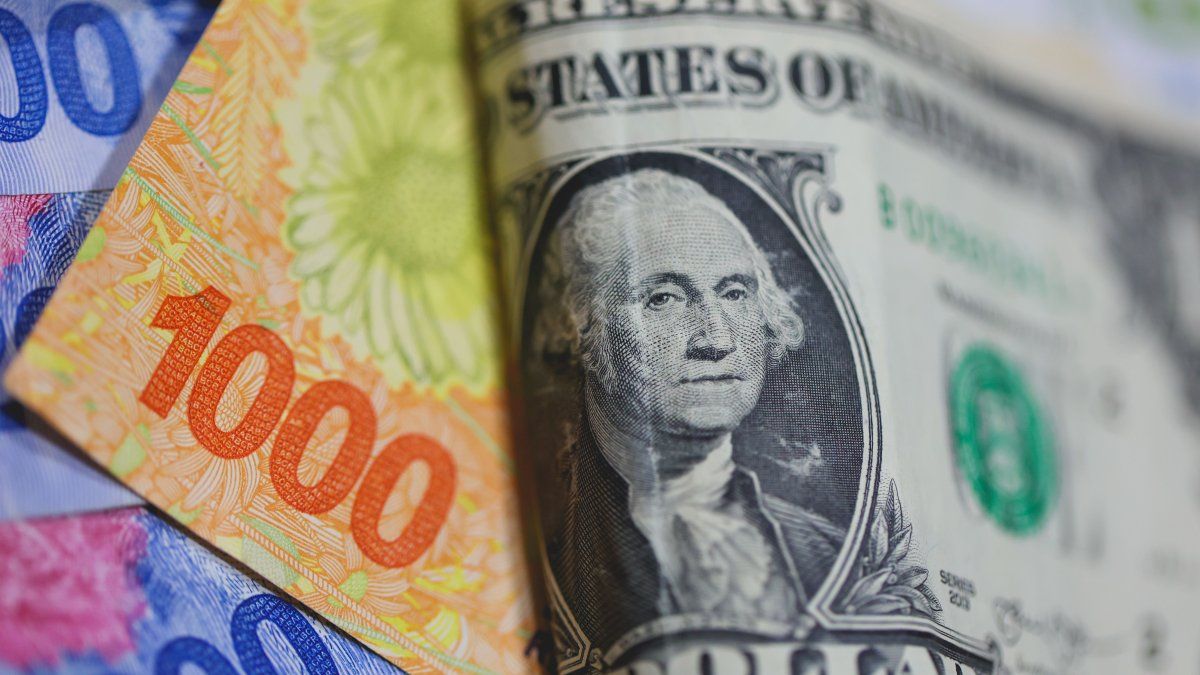Therefore, to become advanced economies in the midst of these headwinds, middle-income countries will have to work miracles, say experts from the international financial organization. Today, perhaps, knowing the advent of a new term for Donald Trump, instead of miracle they would use another, more disturbing noun.
Dollars.jpg
The truth is that since the ’90s, many countries have managed to escape low-income levels and eradicate extreme poverty, which gave rise to the general perception that the last three decades have been excellent for development, however, their Expectations have been abysmally low: vestiges of a period in which more than two-thirds of the world lived on less than a dollar a day, the WB points out.
Salaries: which are the middle-income countries
Currently, 108 countries are classified as middle income. The ambition of many of them is to reach the category of high-income countries in the next two or three decades.
However, compared to that goal, their record is discouraging: since the 1990s, only 34 middle-income economies have achieved that status, together representing less than 250 million people (Pakistan’s population) and more. a third of them benefited from joining the European Union or from the discovery of oil. And since 1970, the average per capita income of middle-income countries has never exceeded 10% of the US level.
In a very interesting report titled “The Middle Income Trap,” the WB argues that to escape the “middle income trap,” countries need to go through not one, but two transitions.
In a nutshell, the roadmap is summarized in two parts. The first is to move from a “1 i” strategy to accelerate investment to a “2 i” strategy that emphasizes both investment and infusion, in which a country brings in technologies from abroad and diffuses them domestically. Once a country has been successful, it can move to a “3 i” strategy, where it adds innovation to the investment and infusion mix.
salaries pesos parity income

Argentina and the problem of income and cost of living.
Reuters
The study is of interest, especially now that the Trump 2.0 since his apparent agenda will be a great obstacle to the WB’s recipe.
It turns out that these 108 middle-income countries generate more than 40% of global GDP and more than 60% of carbon emissions, and they face much greater challenges than their predecessors in escaping the middle-income trap: rapidly aging populations, greater protectionism in advanced economies and the need to accelerate the energy transition. In other words, music to the ears of Trump 2.0.
The strategy to get out of the middle income trap
So, “in view of increasing debt and population aging, growing protectionism and greater pressures to accelerate the energy transition, middle-income countries today face more and more obstacles.”
In this regard, Indermit Gill, chief economist and senior vice president of Development Economics at the World Bank, pointed out that the battle for global economic prosperity will be largely won or lost in middle-income countries, but too many of these countries resort to outdated strategies to become advanced economies, relying solely on investment for too long or shifting prematurely to innovation.
“A new approach is needed: first, focus on investment; then, emphasize the incorporation of new technologies from abroad, and, finally, adopt a three-pillar strategy that balances investment, incorporation and innovation. With increasing demographic, ecological and geopolitical pressures, there is no room for error,” he explains.
The “3i” strategy for countries to achieve high-income status takes into account the stage of development they are in, so all countries must adopt a phased and progressively more sophisticated policy mix. Low-income countries can focus only on policies aimed at increasing investment: phase 1i.
salary income investments.jpg

How to get out of the middle income trap?
Depositphotos
But once they reach lower middle-income country status, they must change course and expand the policy mix with Phase 2i: investment and incorporation, which involves adopting technologies from abroad and promoting their use throughout the economy. Once they reach the upper middle income level, they must change course again to move to phase 3i: investment, incorporation and innovation. During the innovation phase, they no longer simply borrow ideas from global technological frontiers, but expand the frontier.
Somik Lall, director of the team that produced the study, explained that the road ahead will not be easy, but it is possible for countries to make progress even under the current difficult conditions, and success will depend on how effectively societies balance the forces. of creation, preservation and destruction. “Those who try to spare citizens the inconvenience associated with reforms and opening-up will lose the benefits of sustained growth.”
For example, according to the report, South Korea is a leading example in all three phases of the 3i strategy: in 1960, its per capita income was just $1,200; by the end of 2023, that figure had risen to $1,200. s33,000.
South Korea started with a combination of simple policies to increase public investment and encourage private investment. During the 1970s, that strategy was transformed into an industrial policy that encouraged domestic companies to adopt foreign technology and more sophisticated production methods.
Korean companies responded. Samsung, which had previously made noodles, began making televisions for domestic and regional markets. To do this, it obtained licenses for technologies from Japanese companies (Sanyo and NEC). The success of this company fueled the demand for engineers, managers and other qualified professionals. The South Korean government did its part.
The Ministry of Education set targets – and increased budgets – for public universities to help develop the new skill sets that domestic businesses demanded. “Today, Samsung is a global innovator in its own right, one of the two largest smartphone manufacturers in the world.”
Other countries, such as Poland and Chile, followed a similar path: Poland focused on increasing productivity with technologies drawn from Western Europe while Chile encouraged the incorporation of technology from other countries and used it to drive internal innovation, being one of its Major achievements were adapting Norwegian salmon farming technologies to local conditions and becoming one of the major salmon exporters.
“The handful of countries that have made a rapid transition from middle-income to high-income status have encouraged entrepreneurship by disciplining the powerful, developed talent by rewarding merit, and taken advantage of crises to shift policies and institutions that are no longer suitable for the purposes for which they were conceived. Today’s middle-income countries will have to do the same: discipline dominant actors, reward activities that are based on merit, and take advantage of crises,” the study states.
Source: Ambito
David William is a talented author who has made a name for himself in the world of writing. He is a professional author who writes on a wide range of topics, from general interest to opinion news. David is currently working as a writer at 24 hours worlds where he brings his unique perspective and in-depth research to his articles, making them both informative and engaging.




